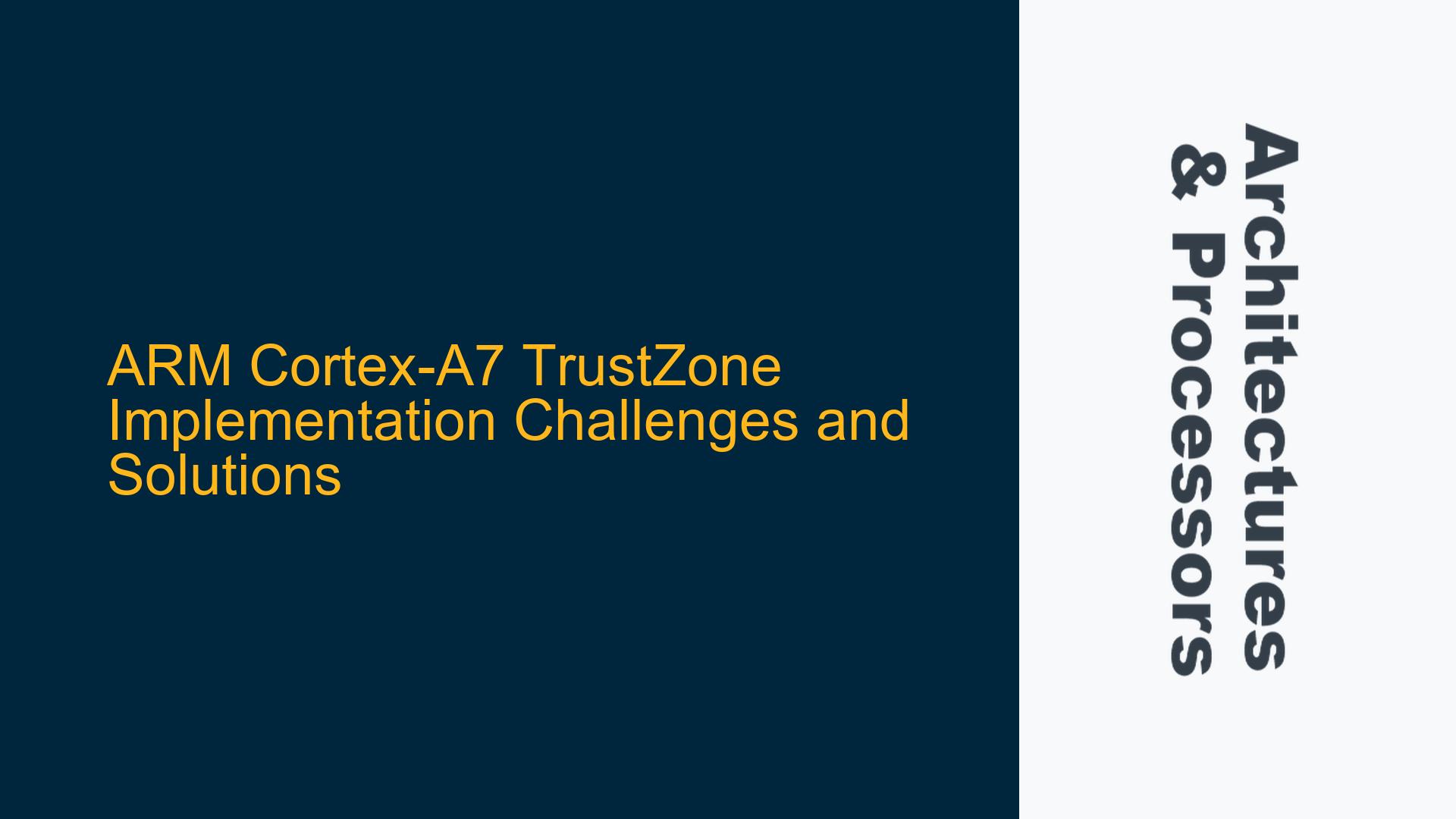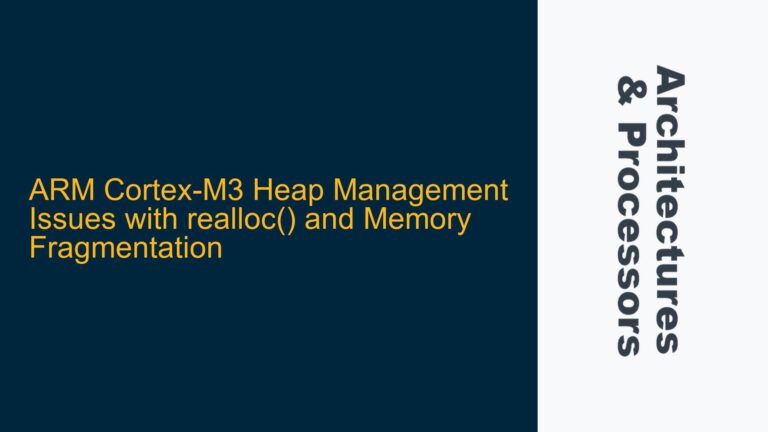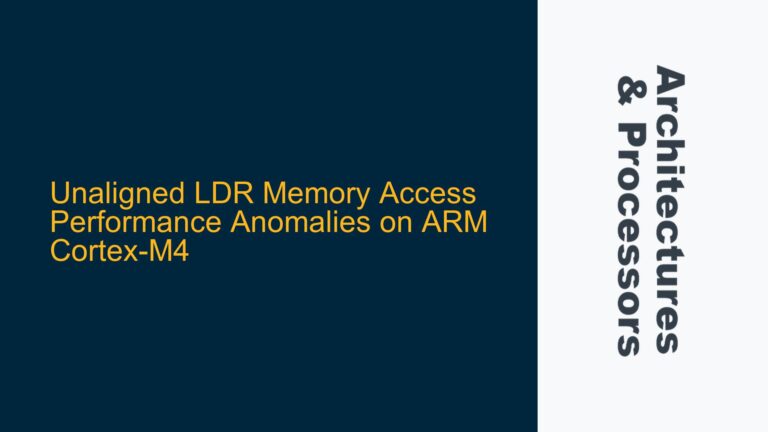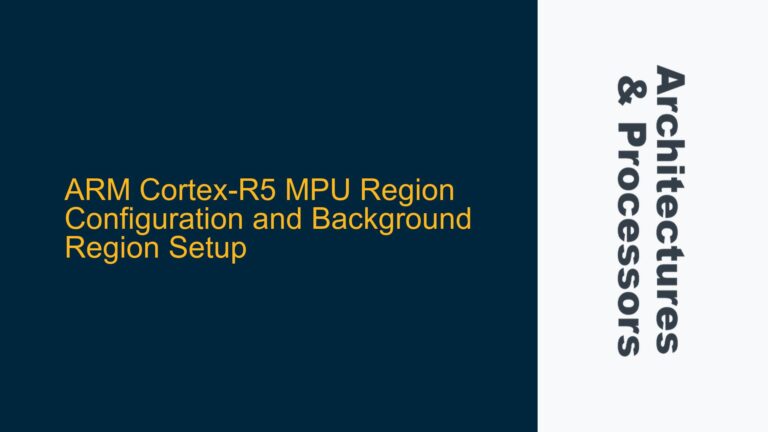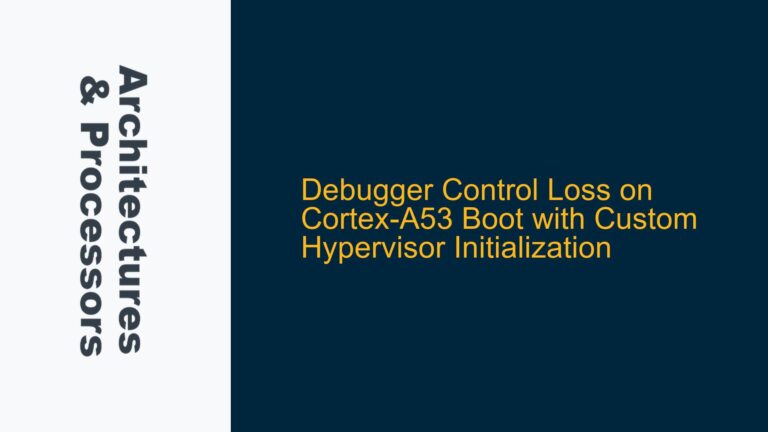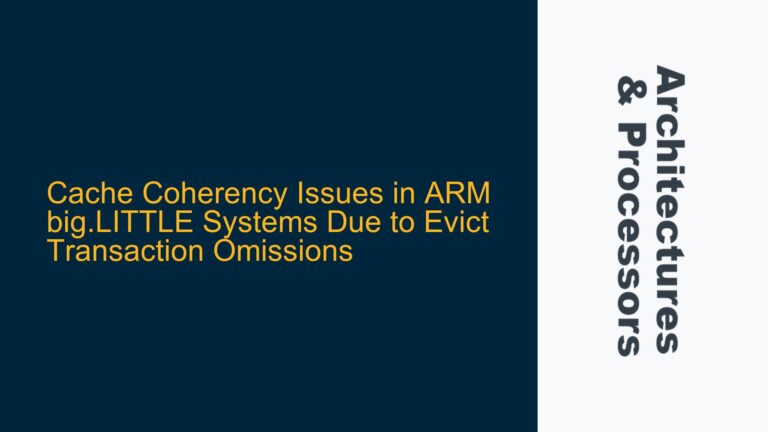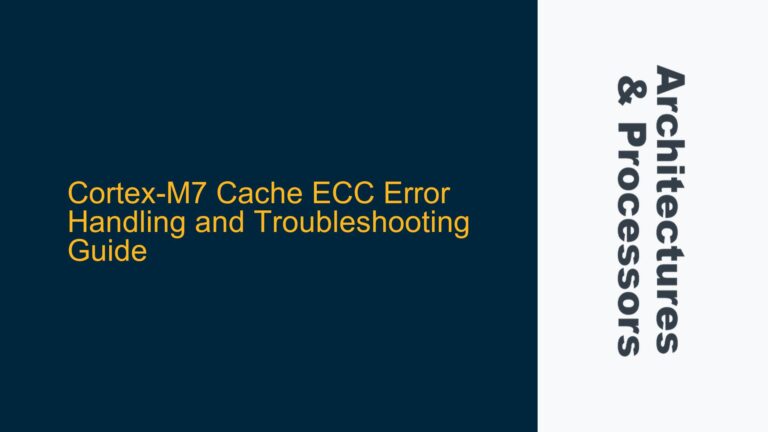ARM Cortex-A7 TrustZone Architecture and Documentation Gaps
The ARM Cortex-A7 processor, part of the ARMv7-A architecture, incorporates ARM TrustZone technology to provide a secure execution environment. TrustZone divides the system into Secure and Non-Secure worlds, allowing sensitive operations to be isolated from the rest of the system. However, implementing TrustZone on the Cortex-A7 can be challenging due to the lack of specific documentation tailored to this processor. While ARM provides extensive documentation for TrustZone on other processors like the ARM1176JZ-S (ARMv6-A), the Cortex-A7’s implementation details are less explicitly covered. This creates confusion for developers trying to implement TrustZone on Cortex-A7-based systems, such as the T113 SoC.
The ARM1176JZ-S documentation, while useful for understanding the foundational concepts of TrustZone, does not directly translate to the Cortex-A7 due to architectural differences between ARMv6-A and ARMv7-A. For example, the Cortex-A7 introduces features like virtualization extensions and enhanced memory management, which are not present in ARMv6-A. These differences necessitate a deeper understanding of the Cortex-A7’s specific TrustZone implementation, including its register configurations, memory partitioning, and secure monitor behavior.
Developers often struggle to find detailed explanations of how TrustZone operates on the Cortex-A7, particularly in areas such as secure world entry and exit, memory protection unit (MPU) configurations, and interrupt handling. This lack of clarity can lead to implementation errors, such as incorrect secure world initialization or improper handling of secure interrupts, which can compromise the system’s security.
Architectural Differences Between ARMv6-A and ARMv7-A TrustZone Implementations
The primary challenge in implementing TrustZone on the Cortex-A7 stems from the architectural differences between ARMv6-A and ARMv7-A. While both architectures support TrustZone, the Cortex-A7’s ARMv7-A implementation introduces several new features and modifications that affect how TrustZone operates. For instance, the Cortex-A7 includes a more advanced memory management unit (MMU) with support for virtualization, which impacts how secure and non-secure memory regions are defined and accessed.
One significant difference is the handling of the Secure Monitor Call (SMC) instruction. In ARMv6-A, the SMC instruction is used to transition between the Secure and Non-Secure worlds, but the Cortex-A7’s ARMv7-A implementation introduces additional complexity. The Cortex-A7 requires careful configuration of the Secure Configuration Register (SCR) to ensure proper world switching. Misconfiguring the SCR can lead to unexpected behavior, such as failing to enter the secure world or inadvertently exposing secure resources to the non-secure world.
Another area of divergence is the handling of interrupts. The Cortex-A7’s Generic Interrupt Controller (GIC) must be configured to support TrustZone, including the assignment of secure and non-secure interrupts. This involves setting up the GIC’s Distributor and CPU Interface registers to ensure that secure interrupts are handled correctly in the secure world. Failure to properly configure the GIC can result in interrupts being mishandled, potentially leading to security vulnerabilities.
Additionally, the Cortex-A7’s cache and memory system must be carefully managed to maintain security. The Cortex-A7 includes a Level 1 (L1) cache with separate instruction and data caches, as well as a Level 2 (L2) cache. These caches must be properly invalidated and cleaned when transitioning between the Secure and Non-Secure worlds to prevent data leakage. This requires a thorough understanding of the Cortex-A7’s cache coherency mechanisms and the use of appropriate memory barriers and cache maintenance operations.
Detailed Steps for Implementing TrustZone on Cortex-A7
To successfully implement TrustZone on the Cortex-A7, developers must follow a structured approach that addresses the architectural nuances of the ARMv7-A architecture. The first step is to configure the Secure Configuration Register (SCR) to enable TrustZone and define the behavior of the Secure Monitor. The SCR controls various aspects of the secure world, including whether the Non-Secure world can access certain system registers and whether exceptions are taken in the Secure or Non-Secure world. Proper configuration of the SCR is critical to ensuring that the secure world is isolated from the non-secure world.
Next, developers must set up the memory system to support TrustZone. This involves configuring the MMU to define secure and non-secure memory regions. The Cortex-A7’s MMU supports multiple translation tables, allowing developers to create separate translation tables for the Secure and Non-Secure worlds. Each translation table must be carefully configured to ensure that secure memory regions are only accessible from the secure world. Additionally, the MMU’s access permissions must be set to prevent unauthorized access to secure memory from the non-secure world.
Interrupt handling is another critical aspect of TrustZone implementation on the Cortex-A7. The GIC must be configured to support secure and non-secure interrupts, including the assignment of interrupt priorities and the configuration of the GIC’s Distributor and CPU Interface registers. Secure interrupts must be routed to the secure world, while non-secure interrupts are handled in the non-secure world. This requires careful configuration of the GIC’s Secure Configuration Register (GICD_CTLR) and the Interrupt Priority Mask Register (ICC_PMR).
Cache management is also essential for maintaining security in a TrustZone implementation. The Cortex-A7’s caches must be properly invalidated and cleaned when transitioning between the Secure and Non-Secure worlds to prevent data leakage. This involves using Data Synchronization Barriers (DSB) and Instruction Synchronization Barriers (ISB) to ensure that all cache operations are completed before transitioning between worlds. Additionally, developers must use cache maintenance operations, such as the Clean and Invalidate by MVA (Modified Virtual Address) instructions, to ensure that the caches are in a consistent state.
Finally, developers must implement the Secure Monitor, which is responsible for managing transitions between the Secure and Non-Secure worlds. The Secure Monitor must handle SMC instructions, configure the SCR, and manage the state of the processor during world switches. This includes saving and restoring the processor’s context, including the program counter, stack pointer, and general-purpose registers. The Secure Monitor must also ensure that the processor’s state is consistent with the current world, including the configuration of the MMU, GIC, and caches.
In conclusion, implementing TrustZone on the ARM Cortex-A7 requires a deep understanding of the ARMv7-A architecture and careful attention to detail. By following the steps outlined above, developers can successfully implement TrustZone on the Cortex-A7, ensuring that their systems are secure and reliable. While the lack of specific documentation for the Cortex-A7 can be challenging, the principles of TrustZone implementation are consistent across ARM architectures, and developers can leverage their knowledge of other ARM processors to guide their implementation on the Cortex-A7.
